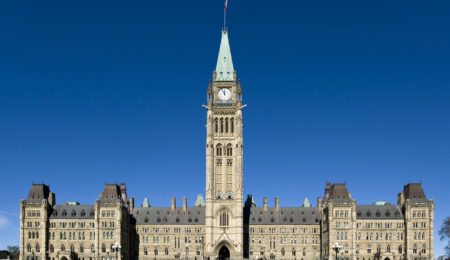Contemporary issues have bred contemporary barriers — for both writers and readers
Challenges to publishing quality news stories grow continuously as the years pass. Similarly, the challenges to accessing quality news stories reflect this. Contemporary issues have bred contemporary barriers, ones both writers and readers feel profoundly. The transformation of technology and media seen in the 21st century has made publishing and accessing breaking news easier than ever before — or so it seems.
Information transports quickly, just as quickly as disinformation is exacerbated by ever-multiplying media outlets, each claiming to be “more true” than the last. Where does this leave the common consumer of news? I would argue, nowhere at all.
Digital news is undoubtedly dominating Western media. In the 2019-2020 publication year, the U of O’s the Fulcrum officially transitioned to a digital-only news outlet, joining a slew of major news publishers in strict digital formats such as Vox, Politico, HuffPost, Slate, and Al Jazeera (English).
The popularity of digital news can largely be attributed to convenience and opportunity throughout the 21st century’s proliferation of news. Immediate distribution, real-time updates, and a mostly global reach all allow publications to release a higher quantity of stories at a faster rate than print. In the average 1.286 seconds it takes to load a webpage, consumers are made front-seat audience members to virtually any current news. But innovation always brings new challenges; the convenience, speed, and quantity of digital news can be equally disadvantageous.
Consumers are empowered with the autonomy to choose their news, sometimes out of hundreds of publishers for a single story. But this can result in mass feelings of reader fatigue and anxiety. Additionally, this oversaturation has promoted an indiscriminate and intense polarization of news.
This is a challenge for both consumer and publisher. Consumer engagement becomes a publishing nightmare; a zero-sum game where quality news cannot keep up with an oversaturated market, and the publishing of fast and poor quality news garners clicks and thus, monetary support, encouraging publishers to sacrifice quality.
For consumers, finding quality news is often not a satisfactory outcome given the effort and time demanded to get there. This inadvertently leads consumers to poor-quality news, which encourages the further spread of disinformation, and ultimately, reinforces a standard of distrust between the consumers and publishers. The results of this can be observed through intense audience fragmentation-echo chamber phenomena or the general popularity of desensitized anti-news attitudes.
Despite the developing difficulties of modern-day news, quality news does exist. To find it, I suggest that you ask yourself what stories matter the most to you, and when you find them, be critical of factors that merit good publishing. Depth, accuracy, clarity, bias, diverse perspectives, transparency, and adherence to ethical standards are all good things to consider.
Understanding the objectives of the writer is crucial when discerning the news you are choosing. Ask yourselves what the author stands to gain and means to achieve. Is the choice of rhetorical language meant to provoke you or persuade you? Are you being informed or entertained? Are the authors presenting information or presenting a critical opinion?
News is changing and journalism is transforming to meet the modern needs of the modern consumer. Revolutionary ideas tend to prevail during times of adversary, and change is coming to fruition. Outlets such as the 2018 founded GroundNews, allow consumers to see political bias of the articles they are choosing. NewsGuard, a browser plug-in, identifies bias, reliability and recently, safeguards users against AI written information. Or PressReader, which allows access to global magazines and journals, allowing you to see how stories are covered differently across the world.
Ultimately, the core of news is stories, and to love stories is to be human. Stories ask questions that guarantee answers. They have beginnings with guaranteed ends and they have actions that are guaranteed to have meaning. Our existence, collectively and individually, guarantees nothing. So when we can’t find the answers, we often take the time to create them ourselves.
We give our questions answers, even if they don’t align with reality. In times of humanity’s uncertainty, the value of truth is too often undermined by the value of certainty, and the legacy of news throughout COVID-19 is a solemn reminder of this. We must be wary and perceptive of the narratives ourselves and others create in our aspiration for security and how they may be instrumentally weaponized to achieve goals we don’t align with.
While these barriers both publishers and consumers face are challenging, we mustn’t ignore the privilege of this struggle. So long as Canadians live with freedom of thought, belief, opinion, expression, and press, we will need to work together to establish a standard of quality news that promotes cohesion, collaboration, and a culture that upholds human dignity and freedom.
In this era of calamitous falsities and sensationalized performances of journalism, the anecdote is likely critical thinking, and if we so choose, we can become champions of responsible journalism and informed discourse. One candle creates a shadow, but many light the way, lest we allow democracy to die in the darkness.







